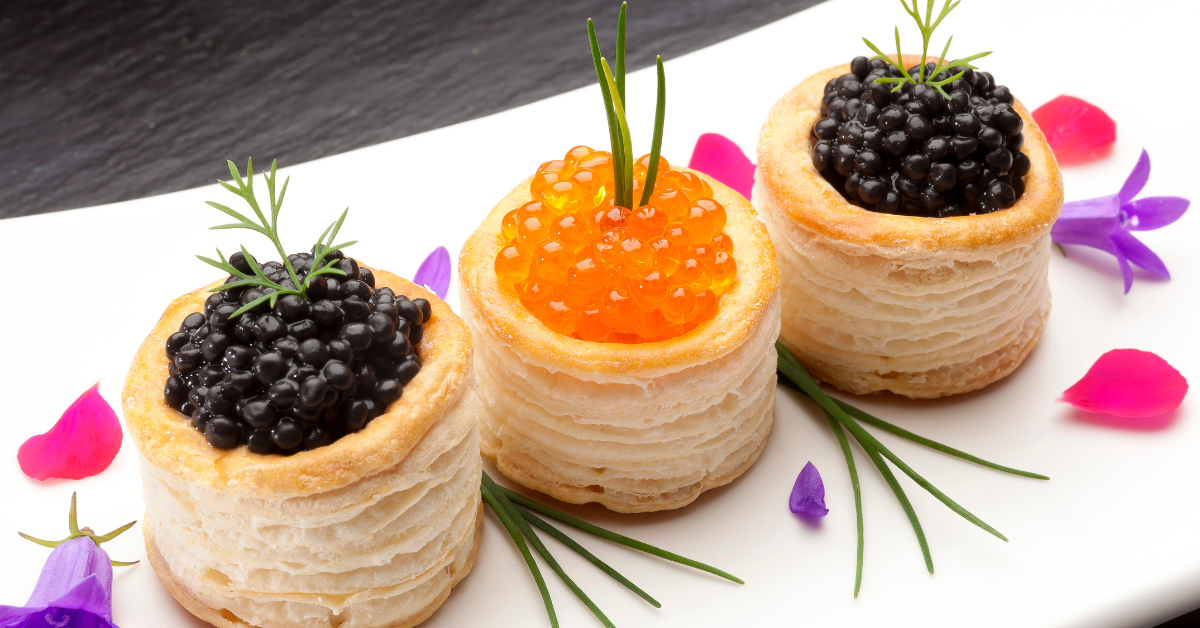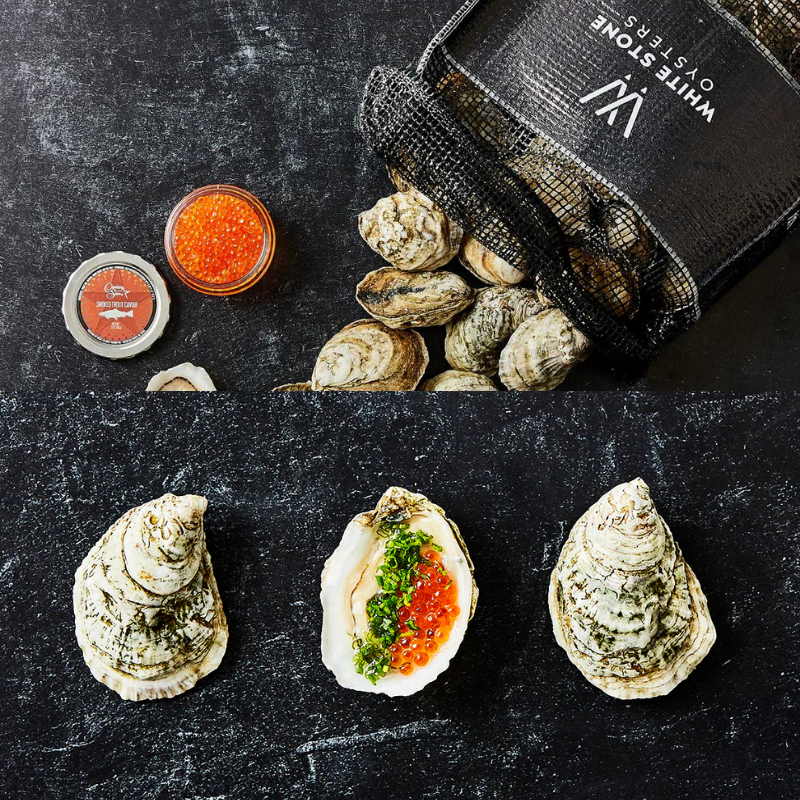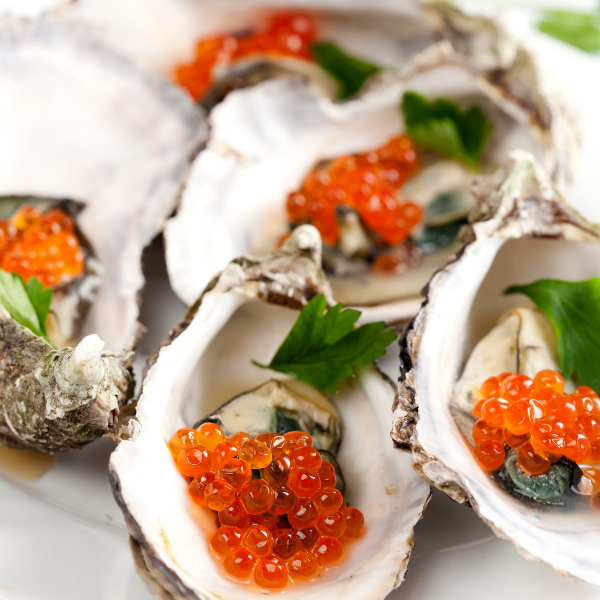
Caviar is synonymous with elegance and indulgence.
The delicate, salty fish eggs evoke images of formal events, fine dining, and opulent lifestyles. But what types of fish actually produce this decadent delicacy?
In this article, we'll explore the origins of caviar, the fish species that yield it, and what makes certain caviars so prized.
Understanding Caviar: A Brief Overview
Caviar, a gourmet delicacy, is made from salt-cured fish eggs or roe, often used as a garnish or spread. Traditionally, it refers to roe from wild sturgeon fish in the Caspian and Black Seas, but now includes roe from other fish such as salmon and trout. It can be fresh or pasteurized, but only roe from the Acipenseriformes order can officially be called "caviar" according to the UN, with other types viewed as substitutes.
Types of Fish That Produce Caviar
Sturgeon Caviar
The most prized and expensive caviar comes from the sturgeon species, namely beluga sturgeon from the Caspian Sea. Other sturgeon varieties like ossetra, sevruga, and sterlet also produce quality caviar. Sturgeon beluga caviar varies in color from dark brown to light gray and offers a bold, salty flavor.
Salmon Caviar
Salmon caviar comes from multiple salmon species like chum, pink, coho, and chinook. It has a bright reddish-orange color and smaller eggs than sturgeon caviar. Salmon caviar has a smoother, subtler taste, with a slightly sweet and nutty flavor. It's more affordable than sturgeon varieties.
Trout Caviar
Trout caviar is harvested from trout species like rainbow, steelhead, and brown. Its eggs are smaller than salmon caviar and range from deep orange to light yellow in color. Trout caviar is mildly briny with a delicate, buttery flavor. It's often used as a sturgeon caviar alternative due to its fresh flavor and sustainable farming practices.
How Caviar is Extracted and Processed
Caviar production is a delicate and intricate process. The caviar is extracted by gently massaging the abdomen of a female sturgeon, salmon, or other fish to extract the eggs. Experienced caviar producers know exactly when the fish are ready to be milked for their eggs. The eggs are sieved to remove any impurities and then salted using premium sea salts. The precise amount of salt is vital, as too little will cause the eggs to spoil, while too much will overwhelm the subtle flavors. After salting, the caviar is packed into tins and chilled. Top producers age their caviar for several weeks or months to allow the flavors to develop fully. Quality caviar often contains no preservatives - just fish eggs enhanced by sea salt.
White Stone Oyster's Smoked Trout Caviar

Harvesting and Processing
At White Stone Oysters, we source our trout caviar from a family-owned trout farm in the Pacific Northwest. The trout are raised in pristine river waters and fed a natural diet to produce superior roe. When the female trout are ready, their eggs are gently extracted by expert caviar producers. The fresh trout roe is then cured in a proprietary blend of sea salt, smoked over a rare applewood, and packaged for freshness. We keep our exact process a close-kept secret that yields caviar with a refined, velvety texture and robust flavor.
Tasting Notes and Pairing Suggestions
White Stone's trout caviar offers a bold yet elegant brininess balanced by touches of smoke and sweetness. The smaller pearlescent eggs provide a smooth mouthfeel with lingering hints of applewood. Our caviar specialists recommend enjoying it on a blini with creme fraiche, used as a garnish for oysters or seafood, or simply on its own as an indulgent snack. Its versatility and universally crowd-pleasing taste make our smoked trout caviar an excellent addition to any gourmet spread.
Caviar and Oysters: An Unforgettable Combination

Caviar and oysters form a memorable gourmet duo. The salty burst of caviar pairs perfectly with the fresh taste of oysters, balancing indulgence and elegance. Our Chesapeake oysters, known for their subtle brine and buttery finish, complement our smoked trout caviar beautifully. That's why we've paired 2 oz of our delectable Smoked Trout Row with 36 of our White Stones in our best-selling Smoked Stones Kit. Whether enjoyed as an appetizer, in oyster shooters, or in an oyster stew, this kit will elevate any meal.
Frequently Asked Questions About Caviar
Is all caviar from sturgeon?
No, while traditional caviar does come from sturgeon, the term can also apply to the roe of other fish like salmon, trout, carp, lumpfish, and whitefish. Only roe from the Acipenseriformes order (containing sturgeons) can officially be called caviar. The eggs of other fish are considered caviar substitutes.
What is the difference between roe and caviar?
Roe refers to the eggs or reproductive material from any fish. Caviar is specifically salt-cured roe from Acipenseridae fish or suitable substitutes. The term caviar is typically used for the salted, processed eggs from sturgeon and select other species.
How should caviar be stored and served?
Caviar should be kept chilled between 28-32° F (-2 - 0° C) to maintain freshness and flavor. It's best consumed within 1-2 days of opening. Caviar is classically presented in its tin on a bed of ice, with mother-of-pearl spoons and blini pancakes as accompaniments. Avoid serving caviar on silver, as it can lend a metallic taste. Savor each small spoonful solo to appreciate the sublime texture and taste.
← Older post Newer post →
